How To Scramble an Egg
- shannonkstrange
- Oct 3, 2022
- 4 min read
As a seasoned (ha) home cook, I'm not ashamed to confess that one of the hardest dishes I've ever had to master is the humble scrambled egg. It's no easy feat! Sure, you could chuck your hastily-swirled eggs into a sputtering bath of hot oil and scrape flecks of expired Teflon into the resulting, rubbery mess and call it "scrambled egg".
But, if you're at all sensitive to texture - which, if you want to level up your cooking, you should be - then this is not the right way to scramble an egg.
Furthermore, it has occurred to me that there are some readers of this blog who are not quite brave enough yet to try their hands at recipes as complex as Stuffed Courgette Flowers or Melanzane Parmigiana. It's entirely possible that many of you are beginners. As such, I'll be posting some simply, beginner-friendly recipes here in the days to come.
Even if you are confident in your egg-scrambling skills, you stand to learn something from this recipe. Have you ever made restaurant-style scrambled eggs? You know, the silky kind that melts in your mouth instead of getting stuck between your teeth? Guess that got your attention, huh? Let's scramble some eggs, friends.
What you'll need:
A good non-stick pan (trust me on this one)
Two free-range eggs (I insist on free-range for both ethical and quality reasons. Free-range hens produce healthy eggs with lovely, golden yolks. I get mine from Farmer Angus when I can)
A smear of butter (get your Canola oil out of my face immediately)
Two slices of ciabatta toast for the *chef's kiss* restaurant experience
Salt, pepper, and Tabasco to taste

How to make your scrambled eggs
Step One: Prep your kak
Crack your eggs into a bowl. The best way to crack an egg without making an unholy mess is to handle the eggs without fear. They are like horses or dogs: they can smell fear. Just crack them on the rim of your bowl with confidence. If you are truly frightened of your eggs, you can just tap them gently about halfway around and break them open with your two thumbs.

Pro tip: if you do get some shell into your eggs, don't bother trying to get it out with your fingers. You're running a fool's errand. Take the edge of a broken eggshell and scoop out the errant shell fragment that way. Reunited at last! And no surprise crunchy bits in your breakfast.
During the prep stage, you'll also want to do things that make your life easier, like putting your sliced bread in the toaster (ready to go when necessary) and heating up a knob of butter - this is important - on low heat in your pan.
Step Two: Whisk it all
Weady to take a whisk? Yeah, baby! Whisk up your eggies with a whisk if you're fancy or a fork if you're not. At this point, your butter should be melted on low heat in your non-stick pan. Make sure that this has happened before you pour your egg mixture into the pan.
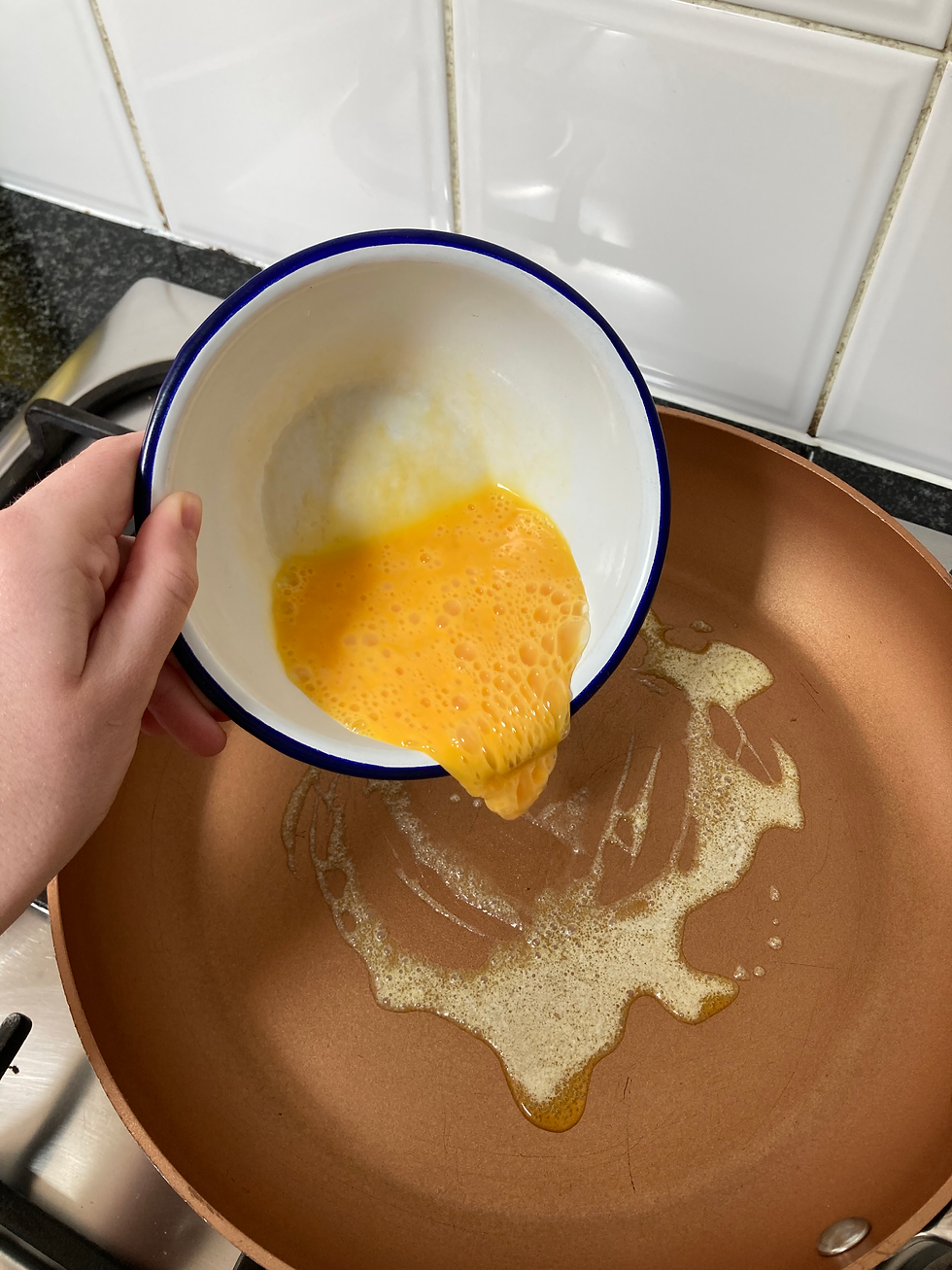
Step Three: Let it be
This may feel counterintuitive, particularly if you were raised in an egg scrambling generation which insisted on pushing the eggs all over the hot pan as soon as they made contact. No, man. That is impolite. You are introducing the eggs and the pan. Allow them to become acquainted for a few seconds.
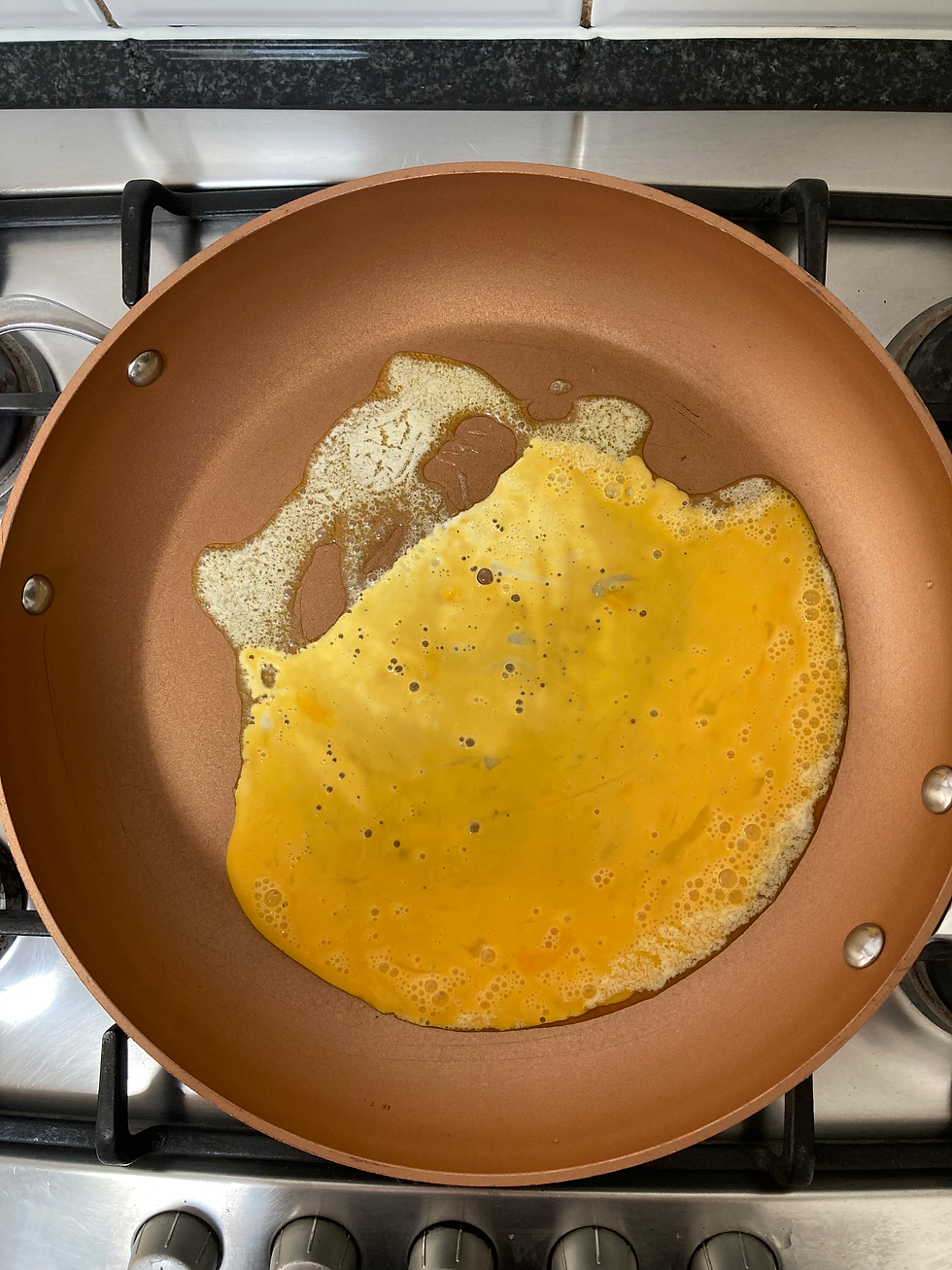
Step Four: We have lift-off!
When the edges of your untouched egg mixture/halfway omelette start to get lighter in colour, you can begin the "scrambling" process. This involved gently flipping the edges of the "omelette" on itself several times over.
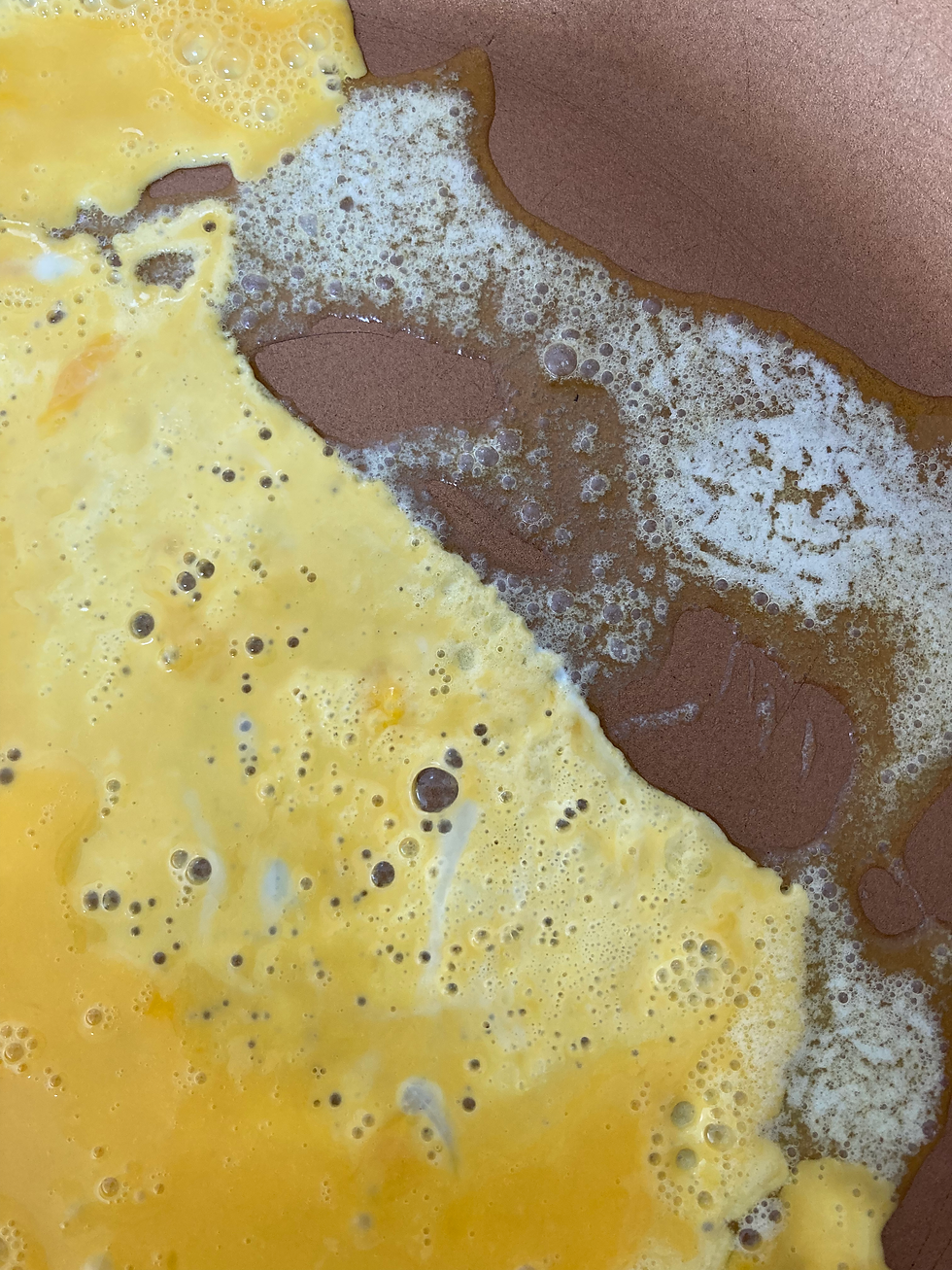

Some of the egg mixture sitting on top will still be uncooked. Don't worry about it. It's about to get its turn on the hot part of the pan.
Step Five: Flip out
Okay, now just keep gently flipping the egg over on itself until it's cooked all the way through. The mixture is likely to break up on itself, which is fine. You can also gently break it apart yourself. I always use a silicone spatula for this kind of cooking, not least because it won't damage my nonstick pan. It's also flexible enough to get under the thin layer of egg easily.
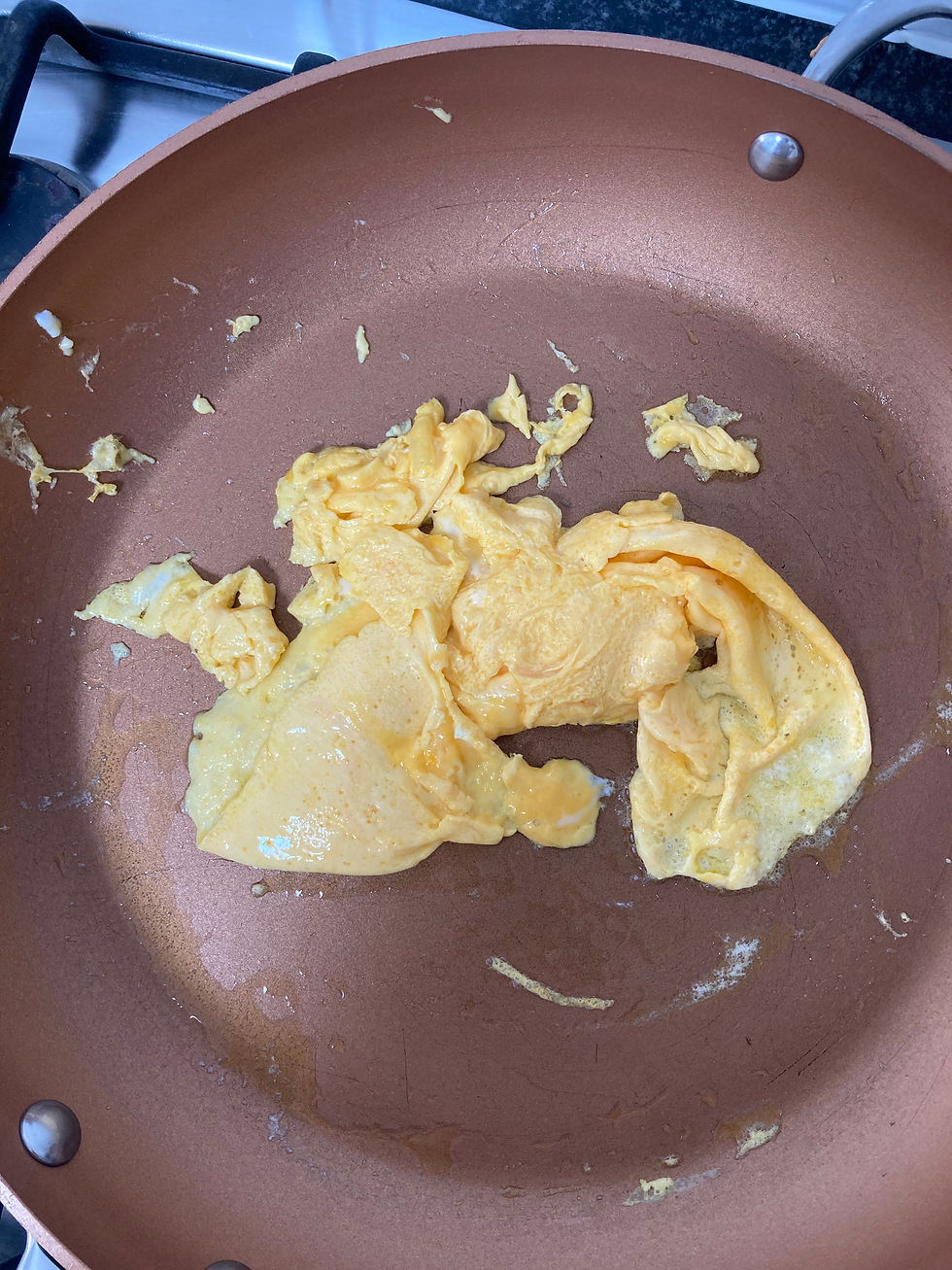
Psst: it's a good idea to put the toaster on at this stage.
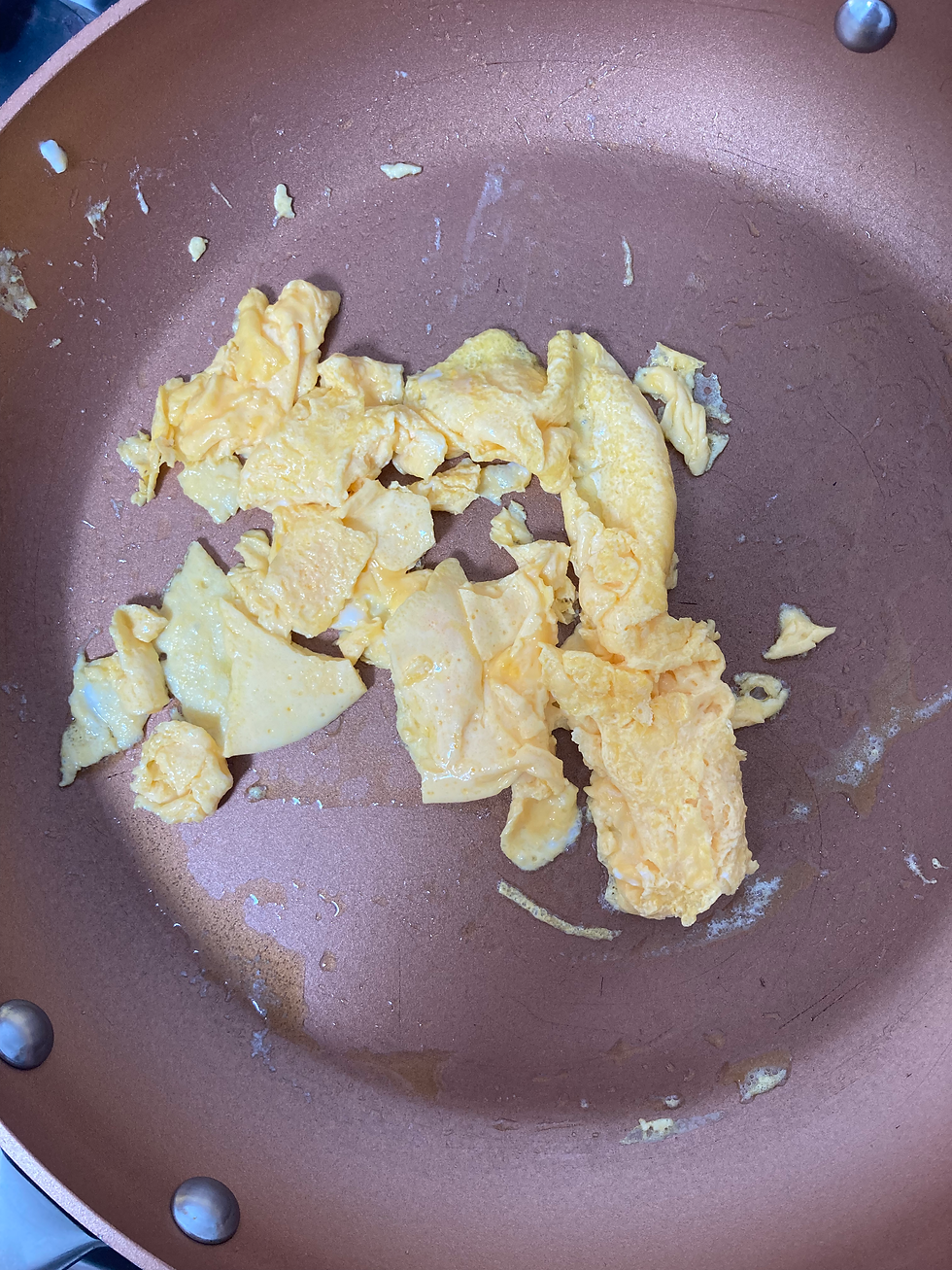
Step Six: Order up!
When you're satisfied with how your eggs are looking, tip them out of the pan onto your freshly popped toast and season with salt, pepper, and Tabasco (for the spicily inclined!).
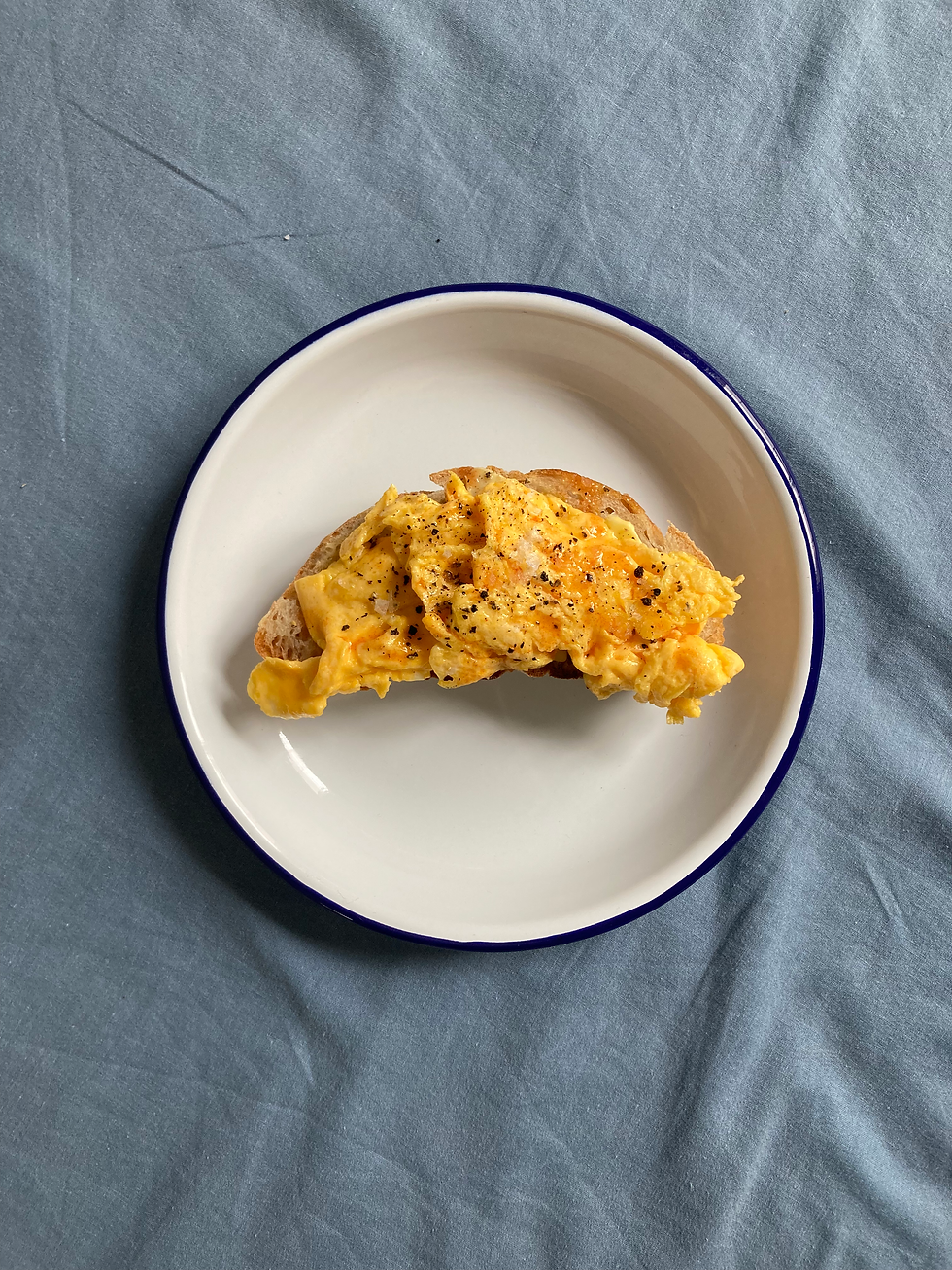
Look at that gorgeous, sunshine-yellow colour: that's a free-range egg for you, babes. By cooking these eggs gently in butter, you produce these soft, silky, golden folds that are deliciously seasoned even before you hit them with salt and pepper. I will never scramble eggs differently in my life. I hope that, when you experience the melt-in-your-mouth experience produced by this recipe yourself, you won't either.
Enjoy!
Love,
Mia

Comments